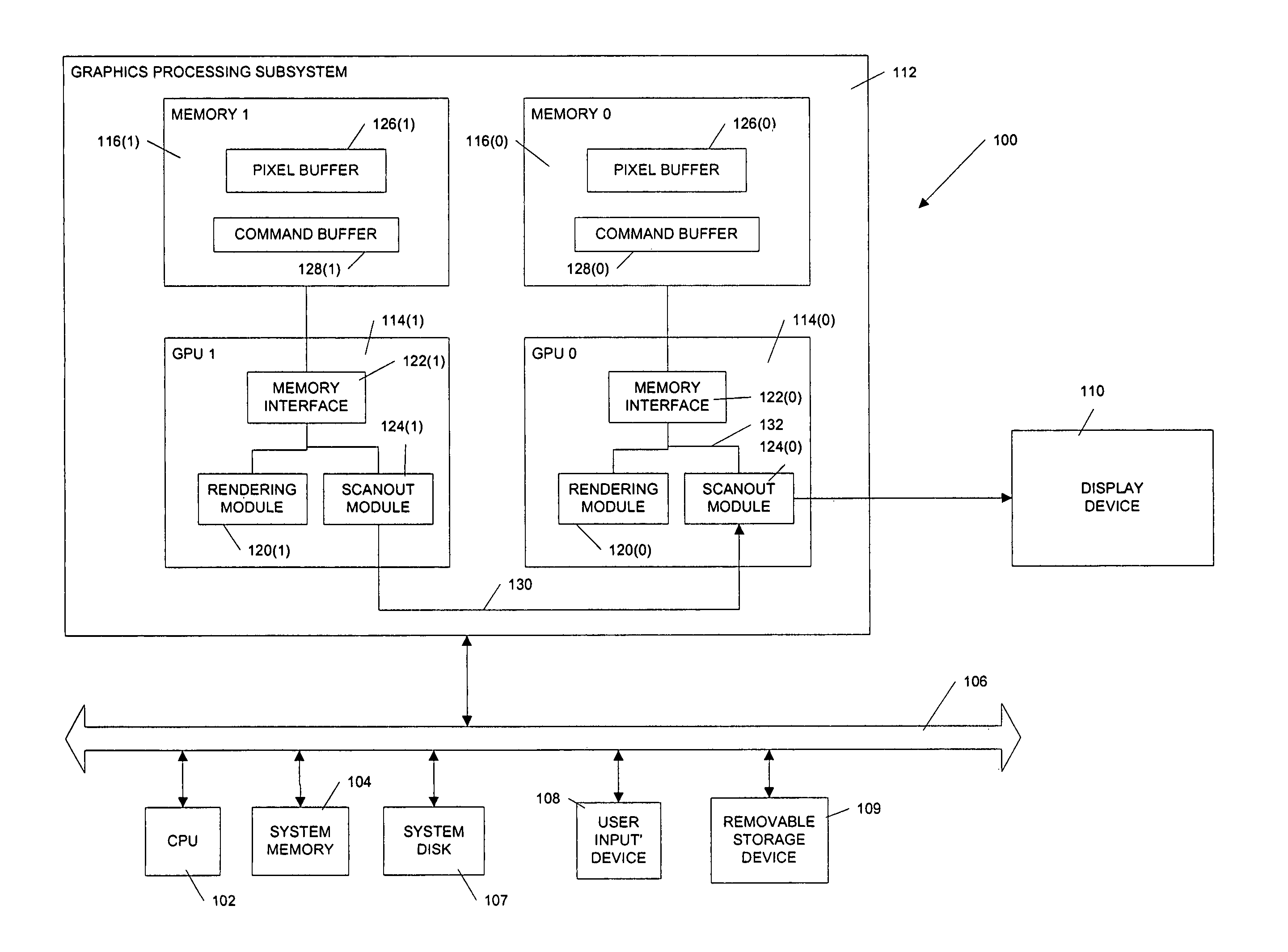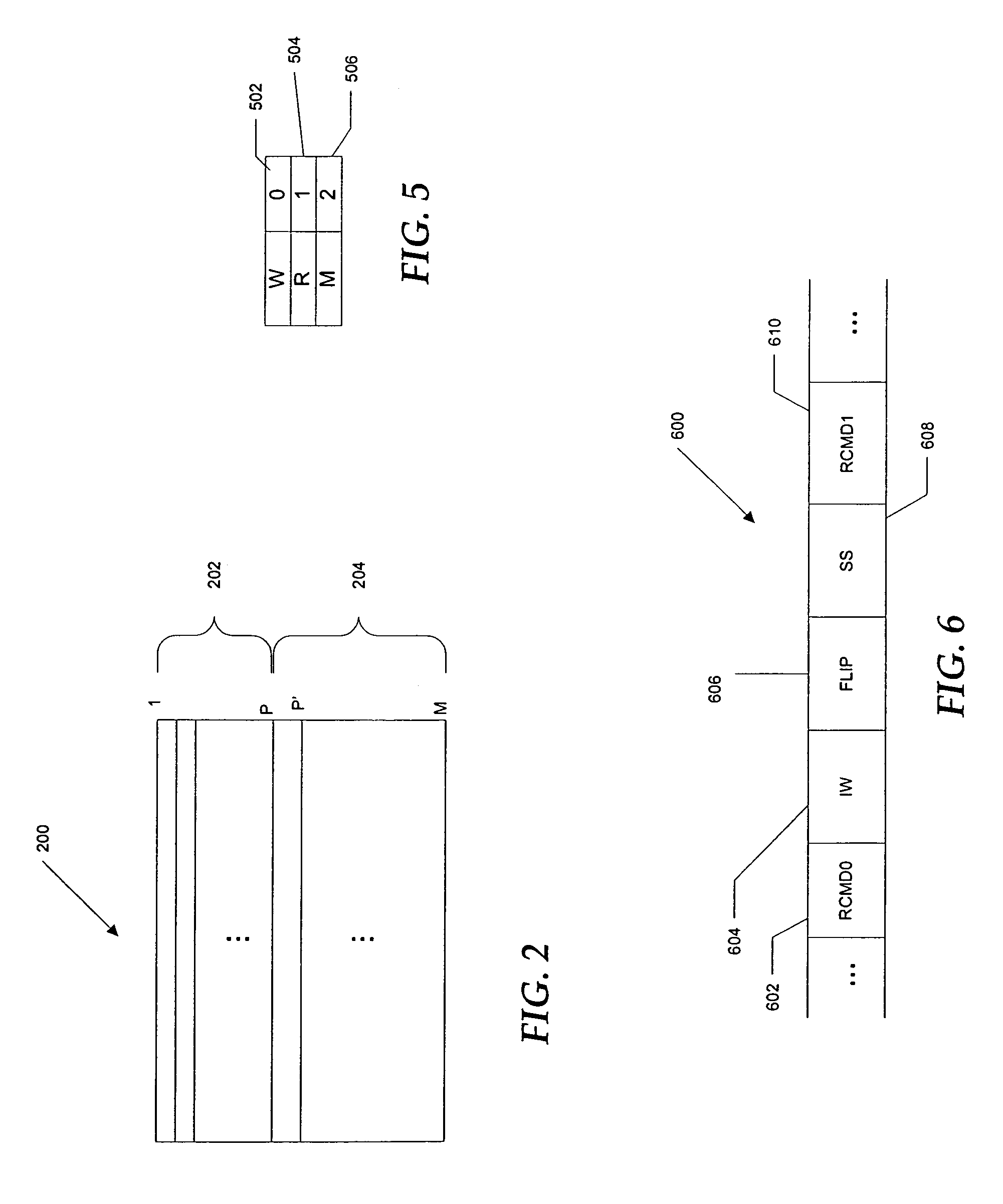Coherence of displayed images for split-frame rendering in multi-processor graphics system
a graphics system and multi-processor technology, applied in the field of graphics processing subsystems, can solve the problems of multi-chip graphics systems, frame coherence, and ensure the unity of all gpus
- Summary
- Abstract
- Description
- Claims
- Application Information
AI Technical Summary
Benefits of technology
Problems solved by technology
Method used
Image
Examples
Embodiment Construction
[0038]Embodiments of the present invention provide systems and methods for coherent image display for a graphics processing systems having multiple processors operating in a split-frame rendering mode. As used herein “coherent image display” refers to updating portions of the displayed image that are rendered by different graphics processors in such a way that the portions form a consistent, coherent whole. For example, in a raster-based display device, all portions of the image would be updated during the same raster scan.
[0039]In split-frame rendering mode, the processors render different portions of a current image in parallel, writing pixel data to respective first frame buffers, while scanning out pixel data for a previous image from respective second frame buffers. As each processor completes rendering of its portion of the current image, it generates a local ready event (or signal), then pauses rendering operations. A synchronizing agent detects the local ready event and gene...
PUM
 Login to View More
Login to View More Abstract
Description
Claims
Application Information
 Login to View More
Login to View More - R&D
- Intellectual Property
- Life Sciences
- Materials
- Tech Scout
- Unparalleled Data Quality
- Higher Quality Content
- 60% Fewer Hallucinations
Browse by: Latest US Patents, China's latest patents, Technical Efficacy Thesaurus, Application Domain, Technology Topic, Popular Technical Reports.
© 2025 PatSnap. All rights reserved.Legal|Privacy policy|Modern Slavery Act Transparency Statement|Sitemap|About US| Contact US: help@patsnap.com



